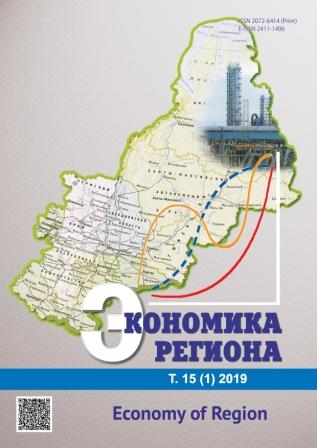Методика анализа демографического потенциала российских регионов на основе нечеткой кластеризации данных
Methodology for Analyzing the Demographic Potential of Russian Regions Using Fuzzy Clustering
Author(s): Oksana Mikhaylovna Shubat, Anna Petrovna Bagirova, Aleksandr Aleksandrovich AkishevSubject(s): National Economy, Human Geography, Demography and human biology, Socio-Economic Research
Published by: Институт экономики Уральского отделения Российской академии наук
Keywords: demographic potential;Russian regions;components of demographic potential;fuzzy clustering;expert assessments;demographic policy;model of demographic space;assessment of demographic potential;
Summary/Abstract: The research is aimed at developing and testing a methodology for analyzing demographic potential of Russian regions. The initial data are the regional official Russian statistics indicators. We proposed an approach for assessing the demographic potential based on a differentiated analysis of its quantitative and qualitative components. The paper presents the developed methodology for estimating the demographic potential, combining multidimensional data classification (fuzzy clustering) and expert assessments. Application of the proposed methodology revealed five specific models in the demographic space of Russia. The first model combines a low level of quantitative components of the demographic potential with a high level of its quality. The second model is characterized by average levels of both components. In the third model, an average level of the quantitative component is accompanied by a rather low level of the demographic potential’s quality. The fourth model combines a high level of quantitative component of the demographic potential with an imbalance of its quality indicators, and the fifth — a high level of both components. We have obtained estimates for the quantitative and qualitative components of the demographic potential for each region and rated them. This has allowed identifying “anchor”-regions and “driver-regions, as well as regions with the most and least balanced assessments of the two components. The paper shows the potential application of the developed methodology. In particular, this methodology allows identifying groups of regions, which need the implementation of specific measures for increasing the quantity and improving the quality of the demographic potential. The most significant limitation of the developed methodology is the lack of a complete set of indicators in the official Russian statistics for assessing the demographic potential. Future research will be aimed at applying fuzzy clustering methods to various demographic phenomena, since this approach takes into account the natural uncertainty, which is typical for such processes and, therefore, makes the results of demographic analysis more formalized and valid.
Journal: Экономика региона
- Issue Year: 15/2019
- Issue No: 1
- Page Range: 178-190
- Page Count: 13
- Language: Russian

